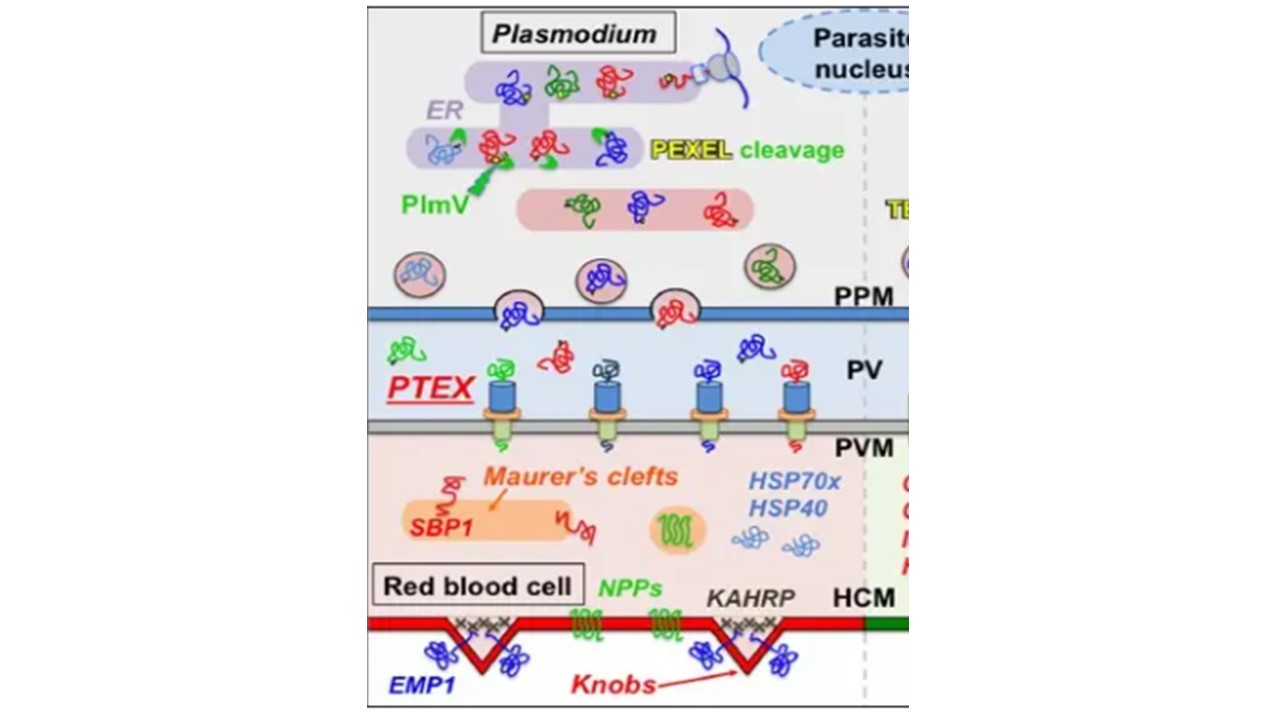Vacuolar secretion pathways in Plasmodium. Effectors and virulence factors follow the general SRP/Sec61-dependent (Signal Recognition Particle/Sec61 translocon) parasitic secretion pathway starting in the endoplasmic reticulum (ER) and progressing through the Golgi and vesicular networks. For effectors carrying a vacuolar translocation signal (PEXEL or TEXEL, yellow), a proteolytic licensing step is performed by an aspartic protease, ER-resident PlmV. Following vesicular secretion into the PV lumen, two distinct and structurally unrelated vacuolar translocation complexes, PTEX in Plasmodium translocate these effectors across the membrane into the infected host cell. Some Plasmodium effectors eventually localize to membranous structures, characteristic of infected red blood cells, such as knobs and Maurer’s clefts. PPM, parasite plasma membrane; HCM, host cell membrane. Egea PF. Crossing the Vacuolar Rubicon: Structural Insights into Effector Protein Trafficking in Apicomplexan Parasites. Microorganisms. 2020 8(6):865.
